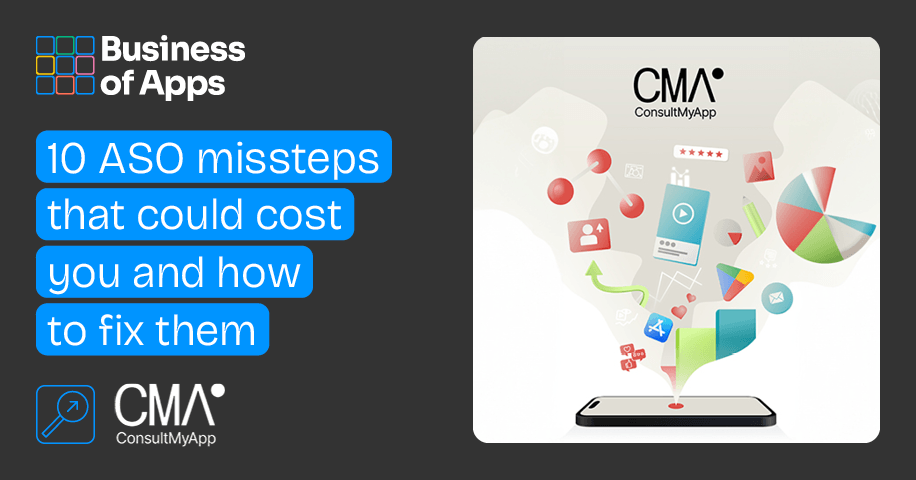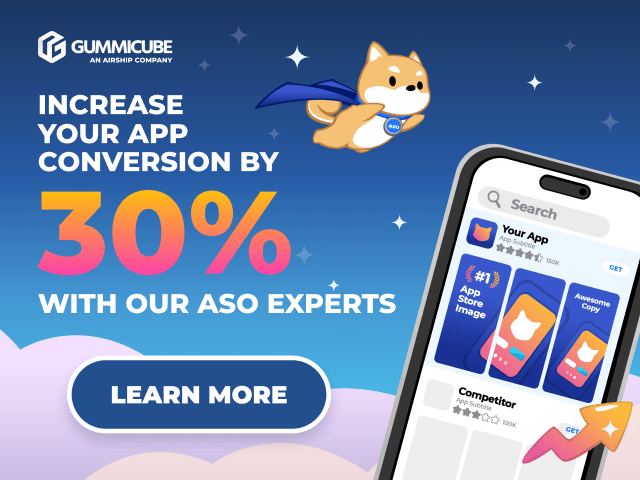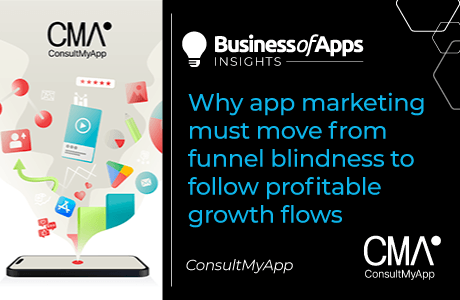Increasing visibility, harvesting high-intent users via that magic word (downloads), and ultimately seeing your app grow without unsustainable acquisition costs—that’s every app developer’s dream, right?
To achieve this ideal scenario, there’s a vital component of your app marketing strategy you can never overlook: App Store Optimization (ASO).
With ASO, it’s not so much about dos and don’ts as it is about definite dos and “oh goodness, please don’ts”. If you want to craft a lasting and winning strategy, ASO is a science of many details. But not to worry—we’ve outlined 10 essential components you really don’t want to overlook in your organic strategy.
Confusing Google Play and Apple App Store strategies
It’s a common error to assume what works for Google Play will work for the Apple App Store, and vice versa. Each platform has its unique algorithm and best practices; for instance, Google indexes app descriptions for keywords, while Apple uses specific keyword fields. If you plan on offering your app on both Google and iOS, then tailoring your ASO approach to each platform is crucial for optimal results.
When optimizing apps for ASO on Android and iOS, developers face distinct challenges due to the different approaches each platform takes. Google Play emphasizes the integration of keywords within the app’s title, description, and back-end metadata, relying heavily on the description for search indexing.
On iOS, the focus is on the dedicated keyword field which prioritizes the title and subtitle for indexing, with the description playing a secondary role aimed more at conversion. Only about 2% of users actually read the description on iOS as the majority make the decision to download the app after looking at screenshots, so it’s important to showcase all the main features there.
Visual elements also differ, as Google Play allows up to eight screenshots and incorporates YouTube videos directly into listings, while iOS supports up to ten screenshots, showcasing the first three or a video in search results to attract users.
Understanding these nuances is essential for developers to effectively tailor their ASO strategies and enhance app visibility and engagement on each respective platform.
Ignoring metadata updates
Regular updates to an app’s metadata are essential in maintaining and enhancing its visibility and appeal on app stores. For iOS developers, it is essential to use the limited space available in metadata fields efficiently. Avoid duplicating terms in the short description (it’s better to avoid duplicates in all fields), as each character counts towards capturing potential users’ attention and improving search visibility. Instead, focus on unique descriptors that highlight the app’s features and benefits concisely and compellingly.
Metadata includes textual descriptions and visual elements such as icons and screenshots. These should be regularly refreshed to reflect the app’s latest features and user interface improvements. This approach keeps the app relevant and can improve download rates, as updated visuals can re-engage existing users and attract new ones.
For those managing iOS apps, leveraging platforms like APPlyzer can provide insights into effective metadata strategies.
These tools offer analytics and recommendations tailored to the iOS environment, helping developers understand how changes to their metadata can affect their app’s performance in the App Store. You can set up an APPlyzer account and track up to 100 keywords, completely free, so is a great place to get started when it comes to your keyword research efforts.
Understanding these nuances is crucial for implementing updates that align with current trends and user expectations, ensuring the app remains appealing and competitive in a crowded market.
Overlooking the impact of creatives
The impact of creatives—such as screenshots, videos, and the overall graphic presentation of your app—cannot be overstated when it comes to converting viewers into users. There are many things you can do to optimize your apps Conversion Rate (CR)
These elements not only attract attention but also play a pivotal role in the user’s decision-making process, serving as a key differentiator in crowded app stores.
When it comes to testing creatives, make sure you cover the basics:
A/B testing
Not groundbreaking, but still a vitally important aspect of crafting a winning ASO strategy. By regularly testing different versions of screenshots, videos, and other graphic elements, you can gather data on your user’s preferences and effectiveness in terms of engagement and conversion rate optimization.
Copy testing
While visuals catch the user’s eye, the textual content within your creatives is equally important in influencing decisions. Copy testing involves tweaking the wording in your app’s description, call-to-action buttons, and even the text within images to see which versions drive more downloads. This process helps refine messaging to ensure clarity and appeal, aligning your app’s communication with user expectations and increasing the likelihood of conversion.
You can use Store Listing Experiments (SLE) for Android and Product Page Optimization (PPO) for iOS to run A/B tests on each respective app store. They have a few minor differences, namely PPO being more focused on visual elements whilst SLE also allows you to test text elements. Ultimately both allow you to run A/B tests to refine your CRO strategy and are incredibly useful tools to be explored.
Localization is more than translation
Effective localization adapts your app to the cultural nuances and specific demands of each market, beyond just translating the text. This can significantly boost your app’s appeal and user engagement globally.
Localization goes beyond mere translation by adapting your app to the cultural nuances and specific preferences of each target market. This strategy is critical for engaging users on a deeper level, as it respects local customs, cultural references, and even regulatory requirements, thereby enhancing the user experience and boosting global appeal.
Effective localization involves several layers:
- Cultural adaptation: This includes modifying content to suit local tastes and cultural practices, such as changing colors, layouts, or images to align with local preferences.
- Legal and regulatory compliance: Ensuring the app meets local laws and regulations can be crucial, particularly in regions with strict controls over digital content.
- Local user behavior: Understanding and integrating local user behavior can significantly impact how the app is received. This might mean altering the app’s functionality or interface to better align with how target demographics use technology.
- Language localization: Beyond translating text, this involves localizing to dialects and idioms to ensure the language feels natural and engaging to native speakers.
By addressing these aspects, you can substantially increase your app’s relevance and attractiveness in foreign markets, leading to improved download rates and user retention.
Rating and reviews management
Managing ratings and reviews is critical to an app’s success, as they significantly influence its reputation and visibility. Effective strategies for managing this aspect are essential.
Effective rating prompts
Strategically timed and worded rating prompts can greatly increase the likelihood of receiving positive feedback from satisfied users. The best approach involves asking for ratings at high points in the user experience, such as after completing a task or achieving a milestone within the app. This timing makes users more likely to leave positive reviews due to the immediate sense of satisfaction they feel. Tools like Google Play’s In-App Review API and Apple’s SKStoreReviewController can help implement these prompts seamlessly.
Resetting ratings
For apps that have undergone significant improvements after a rocky start, resetting ratings can provide a fresh start that more accurately reflects the current state of the app. This can be particularly beneficial if initial issues that led to poor reviews have been resolved. Platforms like Google Play allow developers to reset their app ratings as part of a major update, which can be a critical step in rebranding and reintroducing the app to the market.
Proper management of ratings and reviews involves not only encouraging positive feedback but also addressing negative comments constructively. Responding to criticism in a thoughtful and proactive manner can turn dissatisfied users into loyal ones and show potential users that the developers are committed to improving the app experience. Quite often we will even see changing their rating to 5 stars when they receive helpful and reasonable replies.
Ignoring proper keyword research
Ignoring proper keyword research in your ASO strategy can significantly hinder your app’s ability to attract the right audience and achieve high visibility in app stores. Keyword research is foundational in optimizing your app’s discoverability by ensuring it appears in search results relevant to user queries.
Effective keyword research:
- Use of specialized tools: Utilizing robust tools like APPlyzer is crucial for comprehensive keyword research. These tools help identify which terms are driving traffic in your app’s category, providing insights into user search behaviors and preferences. (It also gives a picture of your app’s visibility level against other apps when you start tracking core keywords.)
- Targeting relevant terms: It’s essential to select keywords that are not only popular but also highly relevant to your app’s features and functionalities. This specificity helps in attracting a targeted audience, which is more likely to engage with and benefit from your app.
- Competitive analysis: Keyword research also involves analyzing competitors to understand which keywords are being targeted by similar apps. This analysis can reveal gaps in the market that your app could fill or highlight areas of strong competition where you might need to double down or differentiate.
Strategic application of keywords:
- Optimizing app metadata: Once relevant keywords are identified, strategically incorporate them into your app’s title, description, and even into the backend metadata if the platform allows. This not only helps in improving your app’s ranking but also aligns with how potential users are searching for apps like yours.
- Continuous optimization: Keyword trends can change rapidly; therefore, continuous monitoring and updating of keywords are necessary. This ensures that your app remains relevant and continues to reach the intended audience effectively.
- Autocomplete targeting: It is an intensive, but highly valuable ASO technique that allows you to get more impressions and downloads from relevant users. As people often don’t type the whole search term and just tap on the autocomplete that appears as a suggestion, it’s very important to capitalize on that and target autocompletes even if it’s long-tail keywords which don’t seem to be the priority at the first place.
Mastering keyword research with tools like APPlyzer involves leveraging their comprehensive analytics to track keyword performance over time, which helps in refining your strategy and making informed decisions about which keywords to target for maximum impact.
Neglecting app performance
Neglecting app performance can significantly impact user satisfaction and ASO rankings. It’s crucial for developers to prioritize performance checks and optimizations to ensure that the app operates smoothly and efficiently. Issues like slow load times, frequent crashes, and high battery consumption can deter users from continuing to use the app and dissuade potential new users from downloading it.
Performance checks and optimizations
Regular performance testing and updates can help identify and rectify issues that degrade user experience. This includes optimizing code, reducing memory usage, and ensuring compatibility across multiple devices and operating systems. Tools like Android Profiler and Xcode Instruments provide developers with detailed insights into their app’s performance metrics.
Impact on ASO
A well-performing app tends to receive positive reviews and higher ratings, which directly influence its visibility in the app stores. Additionally, app stores are increasingly using performance metrics as a factor in ranking apps. This means that apps that perform well are more likely to appear in search results and recommended lists, driving further downloads. In fact, stores also penalize the app with high crash rates reducing its visibility to hide apps with bad user experience from people who browse the store.
Ignoring seasonality
Apps often see download spikes during certain times of the year. Tailoring your ASO to leverage seasonal trends can lead to significant download boosts. Learn how to use seasonality in your ASO.
Ignoring seasonality in your ASO strategy can lead to missed opportunities for boosting app downloads during key times of the year. Seasonal trends, such as holidays or special events, significantly influence user behavior and interests, and tailoring your app’s marketing and updates to these times can drive increased traffic and engagement.
Leveraging seasonal trends
Apps can be updated with seasonal features, promotional offers, or content that aligns with current events or holidays. For example, a shopping app might introduce special discounts or features for Black Friday, while a fitness app could launch a New Year resolution campaign in January.
Incorporating seasonality into ASO
Updating your app’s keywords, screenshots, and descriptions to reflect seasonal trends can make it more relevant and attractive to users searching for related content. This can include decorating your app icon and screenshots with seasonal themes or updating the app description to include keywords related to upcoming holidays or events. This strategy results in higher conversion rates which allows you to drive more downloads.
Strategic timing
Timing these updates is crucial. Implementing them just ahead of the season or event can maximize visibility and attractiveness when user interest peaks. Psychologically, people always prefer the most up-to-date products and if they see Christmas design right before Christmas, it significantly increases the chances to become their first choice.
By integrating seasonality into your ASO strategy, you can capitalize on increased user interest during specific times, helping to boost downloads and user engagement.
Relying solely on organic downloads
Relying solely on organic downloads to grow your app’s user base can limit its potential reach and impact. While organic growth is important for long-term sustainability, integrating paid acquisition strategies can significantly enhance visibility and accelerate user acquisition.
Synergistic benefits
Integrating organic and paid strategies can create a synergistic effect where each method supports the other. Paid campaigns can lead to increased visibility, which boosts organic rankings due to higher download rates and potential reviews. Similarly, a strong organic presence can make paid campaigns more cost-effective, as users are more likely to download an app that ranks well and has positive reviews.
Strategic implementation:
- Timing: Align paid campaigns with key updates, events, or promotions to maximize impact. For example, running ads during a major update or promotional event can attract users with fresh content or discounts.
- Data-driven decisions: Utilize analytics from both organic and paid channels to refine strategies, optimize budgets, and improve overall effectiveness. Monitoring metrics such as acquisition costs, user engagement, and lifetime value can help balance spending between organic and paid efforts, as well as determine which keywords require investment vs keywords which are already performing well organically – and avoiding traffic cannibalization in the process. Many marketers focus and spend most of their budget on keywords that drive downloads with cheap CPI, however, it’s often the terms that the app ranks first organically and can receive those downloads for free.
Not focusing on product fundamentals
Not focusing on the fundamentals of your product—its unique selling proposition (USP)—is a common mistake that can undermine your app’s App Store Optimization (ASO) efforts.
A clear understanding and representation of what makes your app unique is crucial because it not only helps to attract the right audience but also enhances your overall marketing and ASO strategy.
Understanding and leveraging USP in ASO:
- Clarity on product USP: Knowing what sets your app apart from competitors is essential. This could be a unique feature, superior functionality, a niche market focus, or a novel way of solving a problem. Your app’s USP should address a specific need or desire within your target market.
- Aligning USP with ASO: Once your USP is defined, every element of your ASO strategy should highlight and reflect this uniqueness. This includes using keywords that potential users might search for when looking for your specific offering, crafting a compelling app description that communicates the USP clearly, and choosing visuals that reinforce your app’s main benefits. Tools like App Store In-App Events and Play Store Promotional Content are perfect for this purpose and allow you to showcase and test different USPs without major changes to the main visuals or copy.
- Consistent messaging: Ensure that the messaging across all marketing channels aligns with the USP communicated in the app store. Consistency helps in building a strong brand that users can recognize and trust.
Strategic implementation:
- Keywords selection: Choose keywords that are not only relevant but also distinctive to your app’s functionality and benefits. This helps in attracting a more targeted user base.
- Visuals and descriptions: Use screenshots, videos, and app descriptions that showcase the USP, helping users to understand instantly why they should choose your app over others.
- User feedback: Incorporate feedback mechanisms within your app to gather insights on how users perceive your USP. Use this feedback to refine your ASO strategy and product offerings continually.
Final note
By steering clear of these common mistakes and leveraging the recommended strategies and resources, you can significantly enhance your app’s organic performance, leading to better visibility, more downloads, and increased revenue.
If you are interested in implementing a world-leading ASO strategy for your own app, or simply learning a little bit more about app marketing, don’t hesitate to reach out to hello@consultmyapp.com for a chat.











